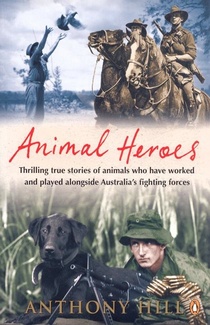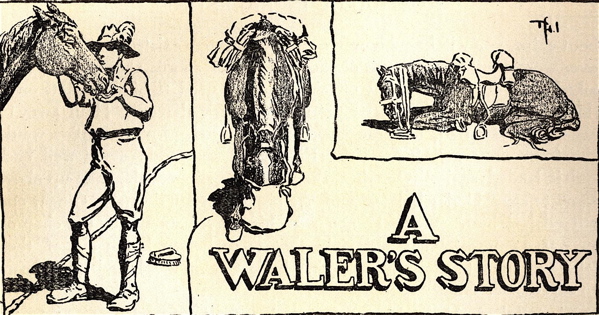First light...
Sitting at the dining table at first light one morning and starting the day’s work, I found myself reading about the Walers … those gallant, stocky horses first bred in New South Wales from the 1830s (hence the name) and ridden by the Australian Light Horsemen especially during the First World War. They’ve become part of our very national consciousness – symbolising I think, as animals so often do, those nobler qualities we like to associate with ourselves. And also, of course, with our tragedies.
 [It’s always first thing for me, should you ask. And always the table and the laptop at the other end of the house, so as not to disturb sleeping family. Some writers can only slog it out with words in the afternoon or evening. Patrick White used to work through the night. For me, when I’m composing, it’s the dawn. No noise. No telephones. Not even the iPad, which is kept in another room to prevent the distractions of emails...
[It’s always first thing for me, should you ask. And always the table and the laptop at the other end of the house, so as not to disturb sleeping family. Some writers can only slog it out with words in the afternoon or evening. Patrick White used to work through the night. For me, when I’m composing, it’s the dawn. No noise. No telephones. Not even the iPad, which is kept in another room to prevent the distractions of emails...
... or it was until the first icy morning of autumn here in Canberra, when I discovered the very great pleasure of sitting up in bed with my dressing gown, a mug of hot tea and the little iPad, tapping out my words in comfort, and emailing them to myself afterwards. What a joy it is to find all these unacknowledged benefits of digital technology!]
The horses in Egypt...
Anyway, the soldier I’m writing about served with the Australian Light Horse – he was briefly at Gallipoli during the Evacuation, which I'll write about for Anzac Day – but mostly through 1915 he was helping to look after the horses left behind in Egypt. It’s an interesting aspect of that campaign, one not often thought about: Who cared for the animals?
Eventually there were thousands of Walers in the camp at Maadi, and many of them had a year to get acclimatised while their troopers fought on foot at Gallipoli. (Light Horsemen were, essentially, mounted infantrymen, equipped with neither sword nor lance.) It was time that proved invaluable when it came to the subsequent desert campaign through Sinai and Palestine, and the 'Great Ride' of 1918 into Syria. These hardy mounts could sometimes travel almost three days without water, go faster than most other breeds, and carry loads of up to 20 stone (over 130 kilos).
A book has recently been published by Roland Perry about one of them, ‘Bill the Bastard’, who rarely let a soldier mount him without first bucking – although he once carried five men out of a battle zone, three on his back and one in each stirrup – without bucking at all.
I’d become familiar with much of the literature during the reading-in for my book Animal Heroes, and I’ll talk about some of that research in later blogs. But this morning I came across something in Henry Gullett’s 1919 Australia in Palestine that I hadn’t really noticed before.

It’s from a short story by E.D.L. Husband titled ‘A Waler’s Story,’ written from the point of view of one of the horses called ‘Baldy’ [such evocative names!] The paragraph which caught my eye concerned that part of the story I’d then reached: the early months in Egypt, their training, and how every Sunday they’d be taken out for a wild gallop on the plains behind Maadi, free for the moment from military disciplines…
‘These gallops were great sport. There would be horses all over the desert, some of them with their riders clinging affectionately to their necks, others without riders … and all of them thoroughly enjoying the fun, and kicking their heels playfully into the air.’
That was nice. I thought it captured something of the bond that came to be established between the Walers and their masters … one that has endured in our national life for nearly a century. And of course the sheer exhilaration that anyone may feel in a damn good ride. I hope you like it. It certainly found a place on my page that morning.
Photo credits:
Animal Heroes cover: courtesy Penguin Books Australia.
A Waler's Story, illustration from Australia in Palestine, 1919.
